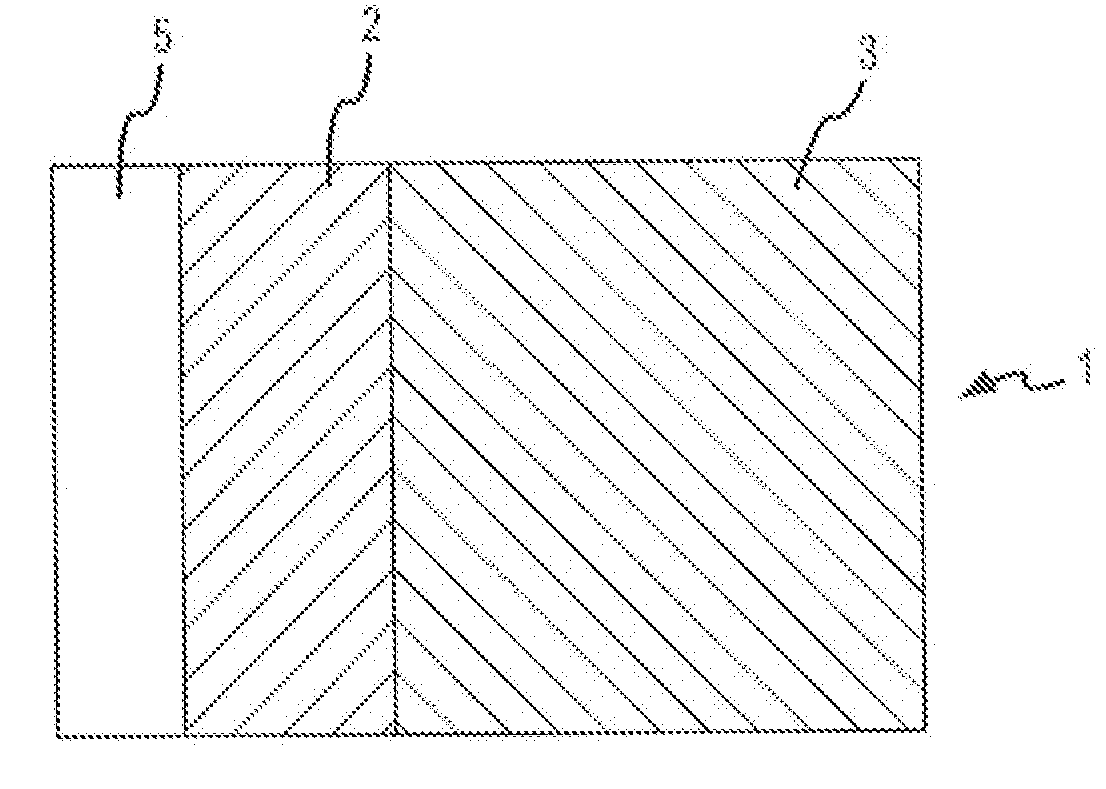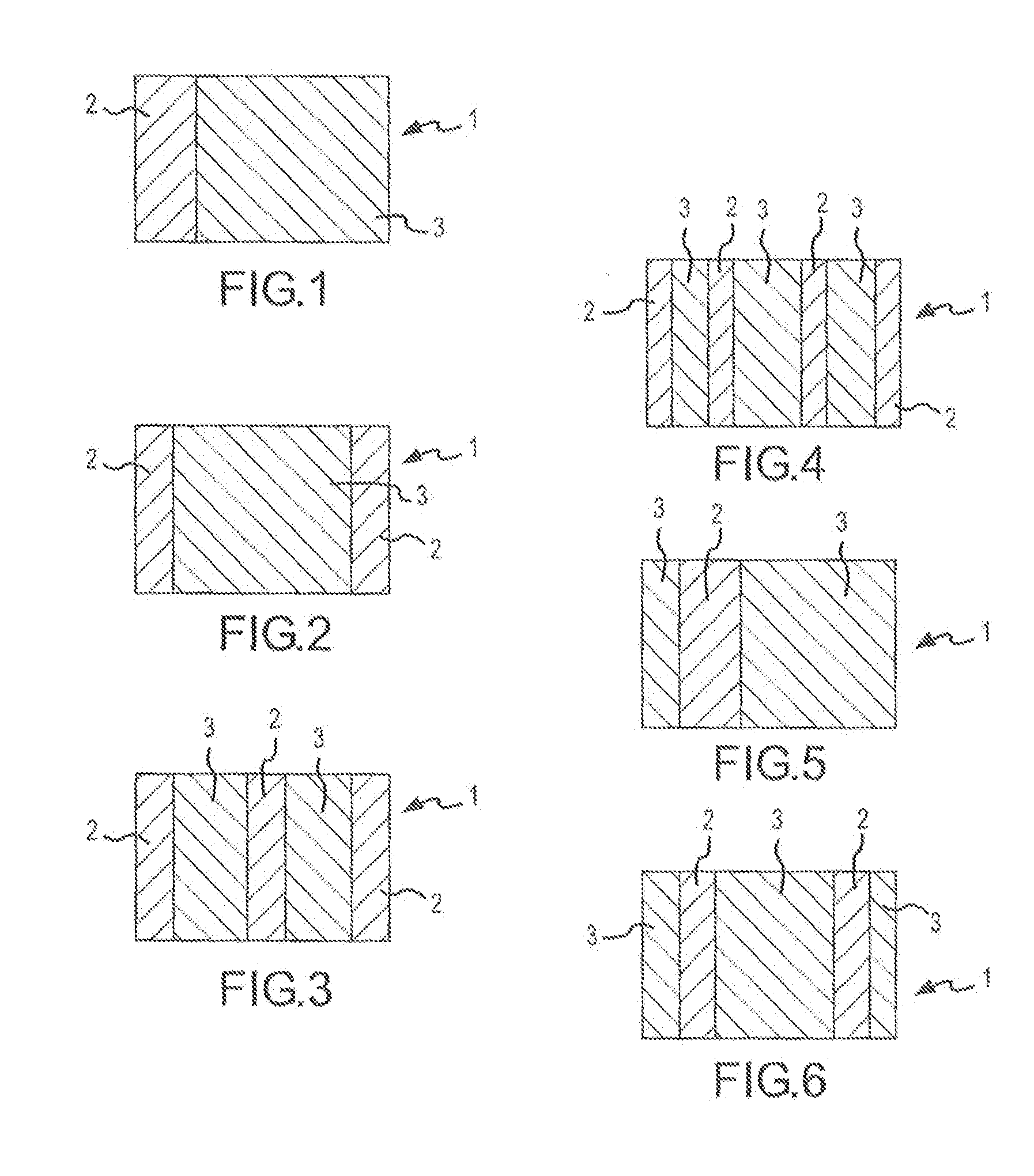Laundry article
a technology for laundry and articles, applied in the field of laundry articles, can solve the problems of difficult manufacturing, inefficient cleaning and conditioning fabrics, and tacky to the touch, and achieve the effect of flexible handling and unique benefits for consumers
- Summary
- Abstract
- Description
- Claims
- Application Information
AI Technical Summary
Benefits of technology
Problems solved by technology
Method used
Image
Examples
example commercial
Processing Description
[0081]Both detergent and Softener Strip formulas are blended at elevated temperatures (120° F.-190° F.) using standard mix tanks and agitation. Order of addition can vary based on mixing and heating capabilities of the system. One process to apply the detergent stripe to the substrate uses a Gravure / Kiss type of application where the nonwoven is passed over a rotating cylinder that has been coated with the detergent strip blend. The cylinder is partially submerged in a trough of detergent blend and rotates to coat itself and thereby transfer the detergent to the nonwoven. A detergent weight of 5-20 grams can be achieved in a 5-inch by 6-inch nonwoven area when process parameters are: Line speed 5-30 feet / second; Cylinder speed 5-30 rpms; Trough temperature 120° F.-190° F.; Cylinder temperature 120° F.-190° F. The detergent stripe can also be coated using a slot dye system that precisely meters the correct detergent weights on to the area of the nonwoven.
[0082]T...
PUM
| Property | Measurement | Unit |
|---|---|---|
| thickness | aaaaa | aaaaa |
| length | aaaaa | aaaaa |
| average diameter | aaaaa | aaaaa |
Abstract
Description
Claims
Application Information
 Login to View More
Login to View More - R&D
- Intellectual Property
- Life Sciences
- Materials
- Tech Scout
- Unparalleled Data Quality
- Higher Quality Content
- 60% Fewer Hallucinations
Browse by: Latest US Patents, China's latest patents, Technical Efficacy Thesaurus, Application Domain, Technology Topic, Popular Technical Reports.
© 2025 PatSnap. All rights reserved.Legal|Privacy policy|Modern Slavery Act Transparency Statement|Sitemap|About US| Contact US: help@patsnap.com



